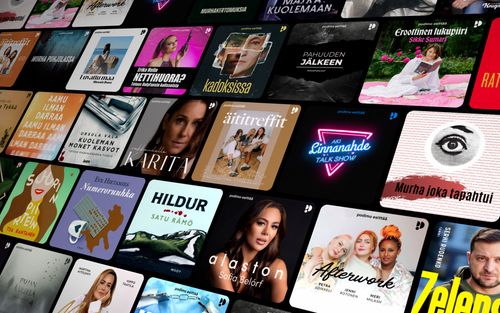How to optimise your website, blog and podcast for SEO with Sarah & Hannah
Your Dream Business - Podcast tekijän mukaan Teresa Heath-Wareing - Maanantaisin

Kategoriat:
This week we’re going to be talking about SEO – Search Engine Optimisation. And to help me (because I know nothing about SEO) I have TWO lovely guests with me! We have the lovely Sarah and Hannah, who are the hosts of SEO SAS. These girls have worked in this industry a long while and they love SEO, so I knew they would be the perfect people to come on and talk to you about this subject. And perhaps you may even be inspired to do something with your own SEO! Key Takeaways Covered in the Podcast • SEO stands for Search Engine Optimisation – the process of increasing both the quality and quantity of traffic to your website, by increasing the visibility of the website or web pages to people via search engines such as google. • Google has over 200 ranking factors. There are over 200 factors that google look at when they are ranking pages and websites. • Most people when they think about SEO, they just think about keywords. It is now so much more sophisticated. You need to think about things such as page speed, user experience, technical aspects and accessibility. • Making one change can make a huge difference, and that may be all you need to do for a couple of months. Simply changing a page title could increase traffic by 20%! • SEO is NOT dead! It is still very important. • There are two types of key words – Educational and Transactional. • You can find out how people are finding you and what they are searching for by using free tools such as Google Search Console. • Domain Authority is a score out of 100, based on the amount of back links to your website and how trustworthy your website is. • You need to make sure everything linked to your website is relevant, trustworthy and natural. Otherwise it can be spammy. • There are link specialists who can help you with your link building. If you are linking out, make sure it is natural and relevant. When getting links to your site, there are lots of different ways you can do this, such as, creating useful articles that can help others (guest post), give a quote about the latest news on another website and digital PR – fun ways to get people talking. • Make sure your blog title is click worthy and answering something that people are going to search for or something that people don’t even know they want yet. • You can research what people are looking for through Google AdWords. • Make sure all your subheadings in your blog are optimised too! • Is there some added value you can add to your blog compared to those that are already out there? Such as a video, more images, more information. • Give people a reason to stay on your site longer and go to other areas after they have read your blog post, or even convert! • Make sure your images are no bigger than 100kb as this can slow down your page speed. • Name your image something relevant, add alt text (alternative text) that describes that image. • Metadata is the information that displays in google – you can decide this! Make sure your title is 60-70 characters long, optimised with key words. Description 120-160 characters, use key words here too! • CTR – click through rate. This will depend on the quality of your metadata. • Test your title tags and metadata using Google Analytics. • SEO for your podcast – show notes and transcripts for google to be able to understand. Work out what key words your podcast should rank for and optimise elements on that page. • Schemer – code that tells google what that content is – Use Google Tag Manager. • Share your podcast on other channels to promote it but also adds links. • Sentiment – reviews – google takes this into account. • Don’t delete products or pages without knowing the consequences! 404 error pages will occur (bad user experience). • Optimise your URLs – think of keywords. • Update your SEO as an ongoing task – google is always changing its algorithm. • Keep an eye on what your competitors are doing. • Test and measure what you are doing/using. One thing

